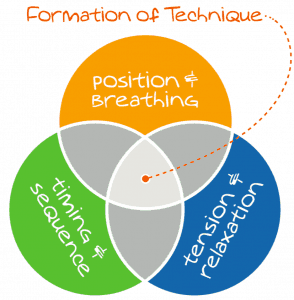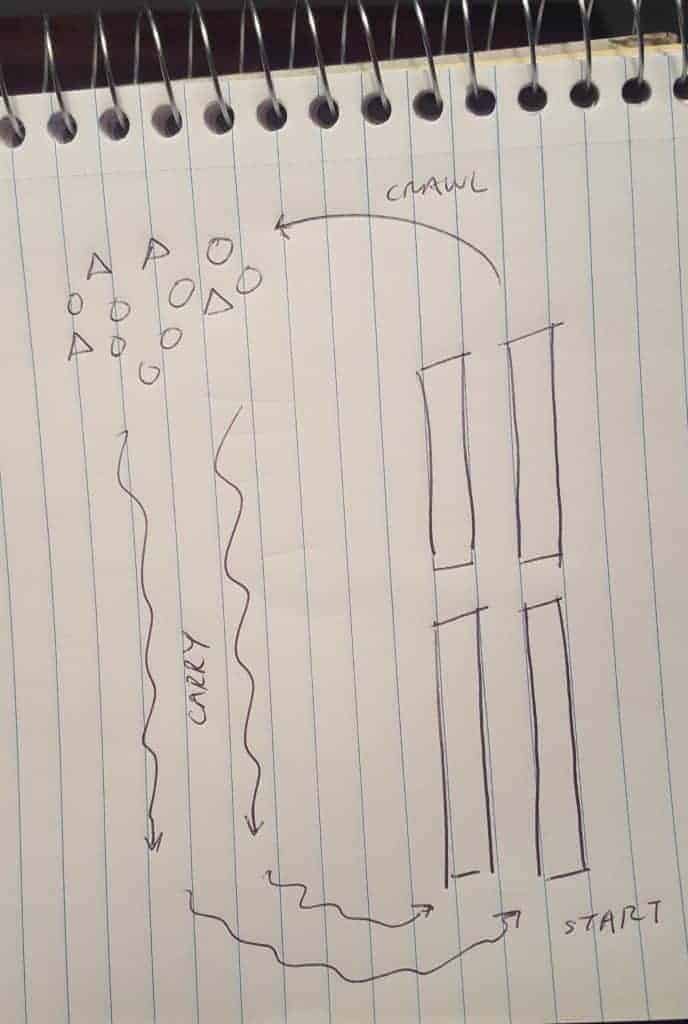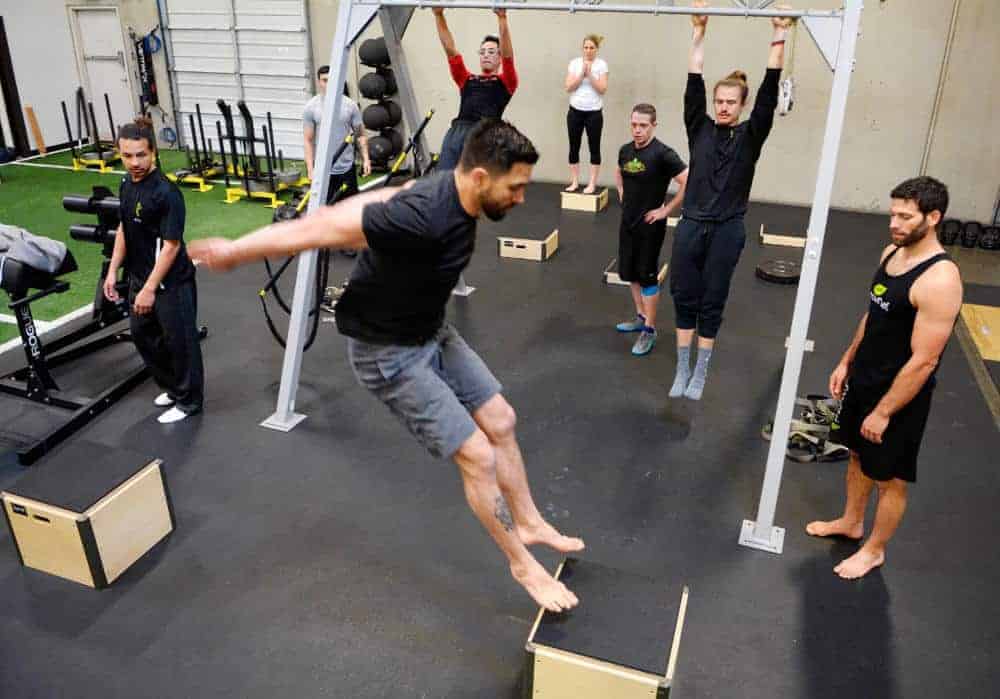The two-day level one workshop is designed to give participants entrance level skills of walking, hanging, crawling, jumping, and throwing. The MovNat Level 1 Certification coincides with the workshop, but has coaches and trainers in mind, digging deeper into elements of class design and group instruction. The MovNat (or natural movement) System is grounded in principles of efficient and effective movement, intent on developing practical and adaptable skills. Based on ideas from the pioneers of physical education, one needs little else than their own body to prepare and navigate for a varied environment.
Training for efficiency marionettes tenets of volume, intensity, and complexity, with the idea being increasing one typically dictates a lessening of another. Carrying a load for a longer distance (volume) might mean lessening weight used or holding it in a more supportive position (intensity), for example. Effectiveness, on the other hand, grants more emphasis on the how. It incorporates mindfulness, technique, and adaptability.

Position + breathing sets the foundation for tension + relaxation, which is expressed in timing + sequence.
Position is a result of postural integrity and base of support. The simple act of laying gets more complex when you remove parts of the body off the ground or reorient the body in space. Parts that could otherwise relax must tense to adjust to a new posture. Likewise, widening or narrowing your foot and hand position in a crawl changes the intent and or intensity, depending on your levels of adaptability:
Timing and sequence are manifested in precision jumping. Leg swing jumps are very efficient, and were a much easier solution to hit targets over broad jumps. The larger movements utilize more parts and though they can create more power, the coordination of those parts in synchronicity can be hard to come by without deliberate practice. Full-foot landings gave way to ball of foot landings to change up base of support and increase the intensity of shock absorption:
All three elements of technique are used in the tripod balance. Position, tension, and timing must all modulate to complete the task at hand. Originating on the floor to be able to replicate it’s parts, the move shifts to balance work when the user is placed on a 2×4 (or PVC pipe). The threading of the free leg through the gap is the same mechanism employed when vaulting. Sped up and exaggerated, the body is jump-thrown over the barrier:
Combining more than one skill into a singular act is called a combo move. Carrying while crawling illustrates one such possibility:
Combining crawling with carrying. #load #crawl #carry #movnat #thinkmovement
A post shared by Chris Ruffolo (@ruffolous) on
The pieces are then strung together in a 3-5 skill course that could be done for time or rounds. The sample that I came up with for my PE class was the following:

Balance beam walk to start, crawl to weighted object, carry weighted object, then repeat balance and crawl with chosen weight until it is dropped back off at the pick up area. Students were asked to complete two laps of both loaded and unloaded work, for four trips total.

